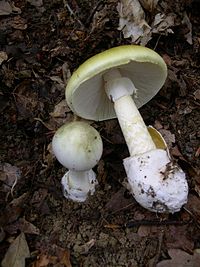
Photo from wikipedia
Introduction Silibinin (silybin), a non-toxic natural polyphenolic flavonoid, is the principal and the most biologically active component of silymarin. It is efficient in the treatment of acute and chronic liver… Click to show full abstract
Introduction Silibinin (silybin), a non-toxic natural polyphenolic flavonoid, is the principal and the most biologically active component of silymarin. It is efficient in the treatment of acute and chronic liver disorders caused by toxins, drug, alcohol, hepatitis, and gall bladder disorders. Further, in our previous studies, we explored the anti-cancer efficacy in common cancers, such as lung, prostatic, colon, breast, bladder, as well as, hepatocellular carcinoma. Interestingly, silibinin is still not solely limited to the treatment of these diseases. Recent research endeavors suggest that silibinin may function diversely and serve as a novel therapy for hematological disorders. Areas covered It discovered several interesting viewpoints in the widely studied mechanisms of silibinin in the hematological disorders. Expert commentary In this report, we review the up-to-date findings of more potency roles of silibinin in β-thalassemia (β-TM), acute myeloid leukemia (AML), anaplastic large cell lymphoma (ALCL) and multiple myelomas (MM) therapy and attempt to clarify the mechanisms underlying its effects. There are two viewpoints: First, The functional mechanisms of silibinin in AML cells via regulating cell differentiation to exert anti-cancer effect; Second, combination treatment strategy may be a good choice.
Journal Title: Oncotarget
Year Published: 2017
Link to full text (if available)
Share on Social Media: Sign Up to like & get
recommendations!